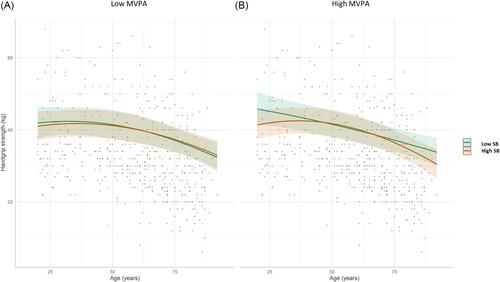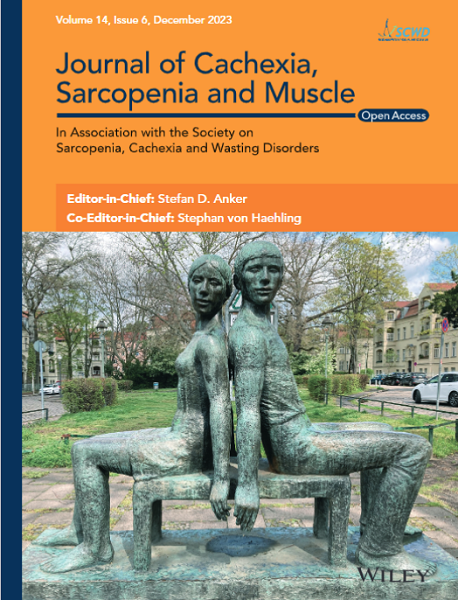The way physical activity (PA) and sedentary behaviour (SB) independently and interactively modify the age-related decline in physical capacity remains poorly understood. This cross-sectional study investigated the independent and interactive associations of PA and SB with physical function and performance throughout the adult life course.
Data from 499 community-dwelling adults (63% female) aged 20–92 years, involved in the INSPIRE Human Translational Cohort, were used in this cross-sectional study. Daily time spent on moderate-to-vigorous PA (MVPA, min/day) and SB (h/day) was measured with activPAL triaxial accelerometers. Physical function and performance were assessed through the measurement of the 4-m usual gait speed (m/s), handgrip strength (kg), lower-limb strength (isokinetic knee extension torque, N·m), estimated lower-limb power (five-time chair-rise test performance, s) and cardiorespiratory fitness (V̇O2max, mL/kg/min). Confounder-adjusted multiple linear and curvilinear regressions were performed to investigate how MVPA, SB and their interactions were associated with the physical outcomes (all square root-transformed except gait speed) throughout the adulthood spectrum.
Interaction analyses revealed that the combination of higher levels of MVPA with lower levels of SB favourably reshaped the negative relationship between handgrip strength and age (age2 × SB × MVPA: B = −7E-08, SE = 3E-08, P < 0.05). In addition, higher levels of MVPA were independently associated with an improved age-related profile in gait speed (age2 × MVPA: B = 3E-06, SE = 1E-06, P < 0.05), chair-rise performance (age × MVPA: B = −9E-05, SE = 4E-05, P < 0.05) and V̇O2max (MVPA at 21 years: B = 3E-02, SE = 7E-03, P < 0.05; age × MVPA: B = −5E-04, SE = 2E-04, P < 0.05). Conversely, the detrimental association of age with lower-limb muscle strength (age × SB: B = −1E-04, SE = 6E-05, P < 0.05) and chair-rise performance (age × SB: B = 1E-05, SE = 7E-06, P < 0.05) was exacerbated with increasing duration of SB, independently of MVPA. Supplementary analyses further revealed that some of these associations were age and sex specific.
This cross-sectional study demonstrated that reduced sedentary time and increased activity duration were independently and synergistically associated with an attenuated age-related loss in physical capacity. These findings need to be confirmed with longitudinal data but encourage both adopting an active lifestyle and reducing sedentary time as preventive measures against physical aging.



